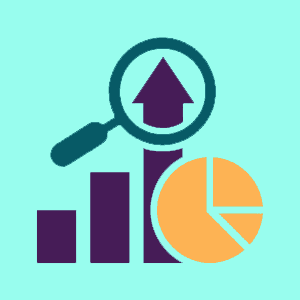 Intent data has emerged as an increasingly popular tool that provides unparalleled insights into buyer behavior. This invaluable resource has the power to expedite sales cycles, elevate conversion rates, and optimize marketing tactics. Despite its popularity, a lot of marketing teams feel at a loss for where to start. In this blog post, we delve into the importance, advantages, and practical applications of intent data, exploring its role in both account-based marketing (ABM) and content marketing strategies.
Intent data has emerged as an increasingly popular tool that provides unparalleled insights into buyer behavior. This invaluable resource has the power to expedite sales cycles, elevate conversion rates, and optimize marketing tactics. Despite its popularity, a lot of marketing teams feel at a loss for where to start. In this blog post, we delve into the importance, advantages, and practical applications of intent data, exploring its role in both account-based marketing (ABM) and content marketing strategies.
Leveraging Intent Data for Advanced Account-Based Marketing
Account-based marketing represents a strategic approach that focuses efforts on high-priority accounts, enabling targeted outreach and personalized engagement. Intent data takes ABM to a higher level by facilitating the identification of prospects showing genuine interest in specific products or services. Here’s how intent data can revolutionize your ABM efforts:
Amplify Prospects Reach: Utilize B2B intent data to curate a list of companies aligned with your ideal customer profile (ICP). By tracking high-intent leads from various sources like your website and marketing campaigns, you can expand your coverage and connect with new buyers while concentrating on those exhibiting keen interest in your offerings.
Real-world success story: Amid the pandemic, a nonprofit management tech company harnessed intent data to uncover 90% of new leads, resulting in increased deals and consumer outreach.
Enhance Lead Conversion: Incorporate intent data to comprehend prospect behavior, fine-tuning outreach efforts for optimal conversion rates. Analyze micro-conversions, such as content downloads or webinar attendance, to gauge intent and customize interactions.
Strategic Competitive Maneuvers: Capitalize on competitive intelligence by closely monitoring competitors’ online activities. Intent data empowers you to identify their popular content and strategies, enabling you to refine your approach and gain a competitive edge.
Real-world success story: An online proofing company utilized buyer discovery intent data, resulting in a substantial pipeline boost and increased revenue.
Proactively Mitigate Churn: Intent data aids in identifying customers at risk of churn. By recognizing signals of waning interest, such as decreased web traffic or low content consumption, proactive engagement can be initiated to retain customers.
Real-world success story: A performance management firm saved $10K in yearly recurring income by utilizing intent data to identify potential churn and address customer concerns.
Uncover Upsell and Cross-Sell Opportunities: Intent data assists in identifying opportunities to upsell or cross-sell to existing customers based on their research and preferences.
Leveraging Intent Data for Precision Content Marketing
Intent data also plays a pivotal role in shaping an effective content marketing strategy. By harnessing intent signals, you can refine your content creation and distribution to cater to the specific needs and interests of your target audience.
Monitor Prospect Content Preferences: Gain insights into your buyers’ preferences by analyzing their content consumption patterns. Intent data empowers you to craft the right type of content, whether it’s extensive articles, videos, or concise blogs, that resonates with your prospects.
Target Topics of Relevance: Utilize intent data to pinpoint the topics your prospects are actively researching. Utilize this information to create content that directly addresses their specific interests, thereby boosting your chances of achieving higher search engine rankings.
Bridge Content Gaps: Intent data exposes gaps in your content strategy. Identify areas where your content is lacking and fill them with pertinent material that aligns with prospects’ intent signals.
Strategically Position within the Sales Funnel: Intent data guides the strategic placement of leads within your sales funnel. Tailor your efforts based on the buyer’s journey stage, fostering seamless marketing and sales alignment.
Prioritize Personalized Content: Personalization is paramount in content marketing. Intent data enables effective audience segmentation, allowing you to prioritize content that resonates with their preferences, thereby enhancing engagement and conversions.
Collecting Insights through Intent Data
Effectively harnessing intent data necessitates the collection of insights through appropriate channels. Both first-party and third-party intent data can be gathered to gain a comprehensive understanding of prospect behaviors and interests.
Gathering First-Party Intent Data: Employ analytics tools and forms on your website to gather data. This enables you to comprehend prospect behavior on your platform and tailor your marketing efforts accordingly.
Accessing Third-Party Intent Data: Procure intent data from reputable vendors that aggregate online research activity from diverse sources. Third-party intent data provides insights into prospects’ activities beyond your website.
The Significance of Intent Data in B2B Marketing
Intent data serves as a catalyst for transformation in B2B marketing and sales. By effectively utilizing intent signals, businesses can uncover high-value prospects, personalize interactions, and optimize strategies for maximum impact. Whether it’s integrating intent data into ABM initiatives or refining content marketing approaches, the understanding and application of intent data can propel marketing efforts to new heights. Embrace the power of intent data and seamlessly integrate it into your data-driven marketing strategy to stay ahead of the curve.
